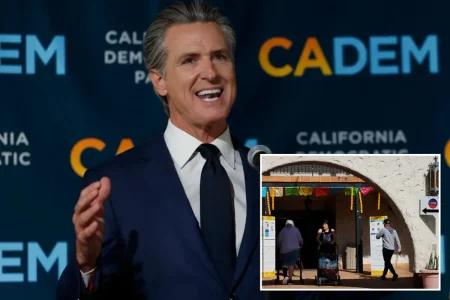The Impact of Partial Payments on Hunger Relief Programs
Recent developments regarding the administration’s plan to implement partial payments have sparked significant concern among anti-hunger organizations and state officials. These stakeholders have expressed alarm that even with partial funding, the proposed implementation methods are excessively burdensome. They warn that despite the administration’s intention to mitigate complete program shutdowns, these partial payment strategies could still lead to substantial harm for vulnerable populations who depend on these nutrition assistance programs.
The complexity of administering partial payments presents numerous logistical challenges for state agencies already operating with limited resources. Officials have highlighted that reconfiguring payment systems, retraining staff, and communicating changes to recipients would require significant time and financial investment. This administrative burden could potentially divert resources away from the core mission of providing food assistance to those in need, creating an unfortunate situation where attempts to maintain some level of service might actually reduce overall program effectiveness.
Anti-hunger advocates have voiced particular concern about how partial payments would affect the most vulnerable recipients, including families with children, elderly individuals, and people with disabilities. These groups typically operate with minimal financial flexibility, and even a small reduction in benefits could force impossible choices between purchasing food and meeting other essential needs like housing or healthcare. The psychological impact of benefit uncertainty adds another layer of stress to populations already experiencing significant hardship, potentially exacerbating health issues related to chronic stress and food insecurity.
State officials have requested more collaborative approaches that would allow greater flexibility in implementing any necessary adjustments. Their expertise in administering these programs at the local level offers valuable insight into more efficient and humane methods of managing budget constraints. Many have proposed alternative solutions that would preserve program integrity while minimizing disruption to beneficiaries, such as phased implementation schedules or prioritization frameworks that protect the most vulnerable recipients.
Both anti-hunger groups and state administrators emphasize that temporary financial constraints should not result in permanent damage to nutrition assistance infrastructure. They warn that hastily implemented partial payment systems could undermine public trust in these essential programs and create lasting barriers to participation, even after full funding is restored. Documentation requirements and complicated partial payment formulas might discourage eligible individuals from applying for benefits they desperately need, leading to increased rates of food insecurity throughout communities.
The ongoing dialogue between the administration, state officials, and advocacy organizations represents a critical opportunity to develop more sustainable approaches to program funding challenges. All parties acknowledge the reality of budgetary constraints, but differ in their assessment of how to minimize human suffering during periods of financial limitation. As discussions continue, stakeholders remain united in their commitment to protecting the fundamental purpose of these programs: ensuring that no American goes hungry due to circumstances beyond their control. The resolution of this issue will likely set important precedents for how essential safety net programs respond to funding uncertainties in the future.









